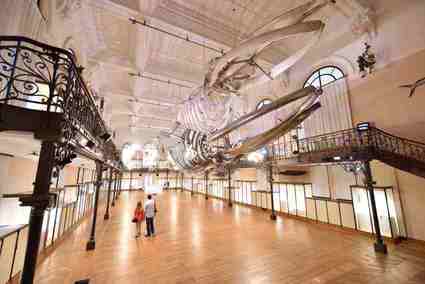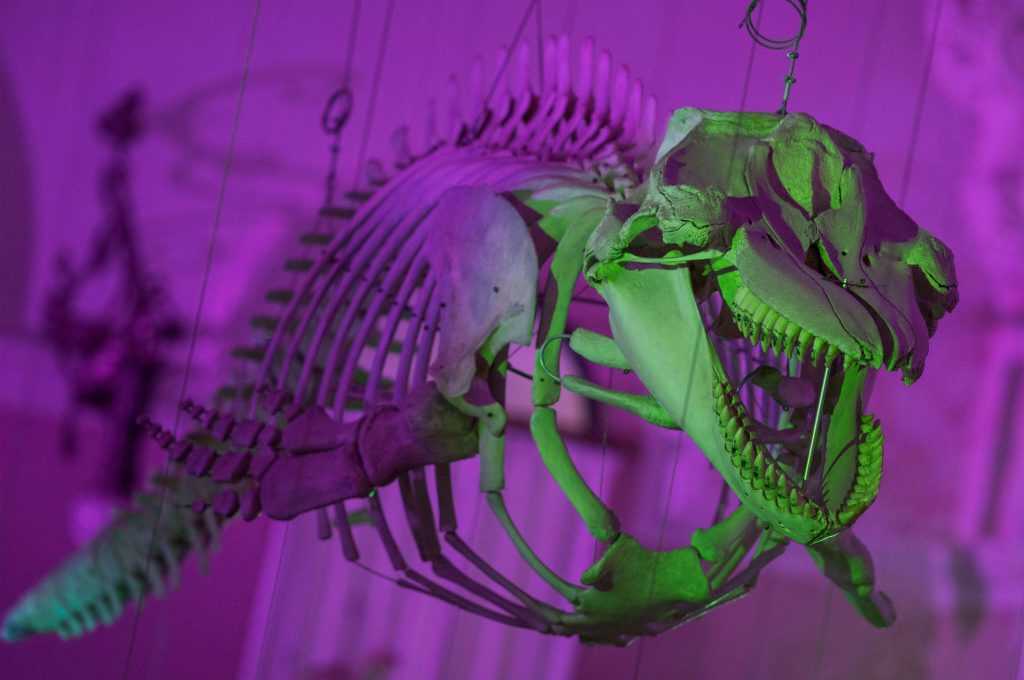A whale in the Museum?
- Home
- Pages
- Museum areas
- Whale Hall
A VOYAGE FROM PAST TO PRESENT
When you enter this unusually large room, you quickly understand why it is called the Whale Room.
A whale of more than 18 meters long dominates us. Suspended several meters above the ground, its 2.8 ton skeleton seems to float in the air. This fin whale washed up on the Ligurian coast of the Mediterranean a very long time ago. In 1896 to be precise, ten years before the creation of the Oceanographic Institute. At 123 years of age, this giant bridges the gap between past and present. This is one of the charms of this very special room, with its unique atmosphere and collection.

As if they were swimming side-by-side
Following this whale, we travel back in time and out to sea, where thousands of its descendants still live today.
As in the Mediterranean, this whale is not alone. Thirteen other marine mammal skeletons appear to be swimming in its wake. Most of them come from the numerous expeditions that Prince Albert I of Monaco has made on the seas of the globe. Among them is an eight-metre sperm whale. The more observant might even count all of his bones. We’ll spare you this task: there are precisely 163 of them!

Admire the collection from above
The other companions of the whale and sperm whale: dolphins, a false killer whale, a Cuvier’s whale, a narwhal with its incredible horn projected like a spear, etc.
To better admire the pursuit of these sea lords and to examine them in detail, you can get a good view of them by walking through the side galleries on the mezzanine.
In passing, we notice that some have five fingers at the end of their fins. A detail that makes them even more familiar to us… For the curious, touch tablets are available in front of each specimen. They help us, among other things, to put a name to the animal behind each skeleton.
Did you know?
At the beginning of each hour, a strange phenomenon brings these venerable representatives of underwater life to life.
A sound and light show orchestrated by Xavier Perret, with original music by Clovis Schneider.
This staging was created to discover or rediscover the inhabitants of this room in a different light.
Any advice? Keep an eye on your watches so you can be there at the right time and surprise your friends or children with this sudden change in atmosphere. In addition to the Museum’s natural history collection, the Whale Hall regularly hosts temporary exhibitions. So many reasons that make it a must!




